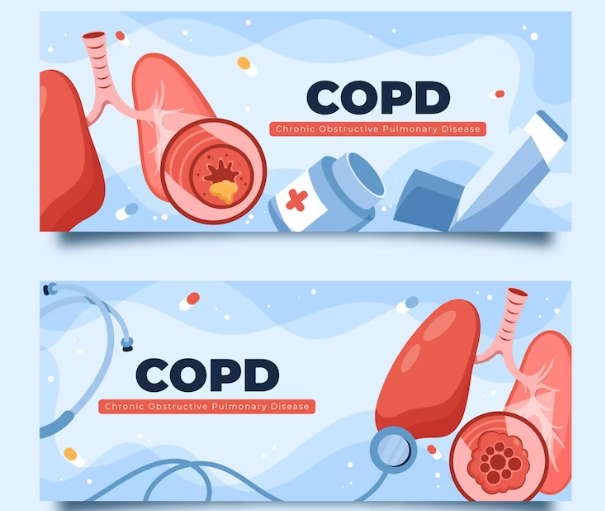Exploring Inhaler Treatment Options for COPD

Patients with chronic obstructive pulmonary disease can receive treatments using a variety of inhaler devices and novel inhalers are continually being developed. The preparation and use techniques differ between each type of device and each has advantages and downsides. Many inhalers are used incorrectly because of inconsistent usage instructions, which can easily mislead both patients and medical professionals.
The inhaled route is preferred for the delivery of Corticosteroids and Bronchodilators used in the maintenance therapy of chronic obstructive pulmonary disease and Asthma. Small pharmacological doses are directly administered to the target area, resulting in a quick beginning of action and a minimal incidence of side effects. It is believed that inhaled medications must be stored in the lungs to have a positive impact. If you or someone you know is seeking guidance on inhaler treatment options for COPD, then Contact Dr. Sheetu Singh, a knowledgeable and experienced pulmonologist who specializes in respiratory care. Whether you are looking to explore dry powder inhalers, soft mist inhalers or other treatment options tailored to your specific requirements. She can offer priceless advice to assist you in managing your condition and enhancing your quality of life.
Pressurized Metered Dose Inhalers
The PMDI was initially designed in 1956 to provide an inhaled bronchodilator delivery system with a multi-dose capacity and repeatable dosage features. PMDI contain propellants which are currently being changed from Chlorofluorocarbons to Hydrofluoroalkanes (HFAs) because the former damage the ozone layer in the stratosphere. Even with adequate inhaler technique, the majority of PMDIs only deposit 10–20% of the dose in the lungs; the remainder is deposited primarily in the Oropharynx. Recent formulations that formulate the medicine as a solution in HFA propellant as opposed to a suspension of micronized particles may result in higher lung deposition and decreased Oropharyngeal deposition.
Using the proper PMDI technique entails firing the device while inhaling slowly and deeply, followed by a breath-holding pause to allow particles to settle on the airway surfaces. Most instructions recommend placing the mouthpiece between closed lips, but it’s also possible to hold the inhaler between open lips or even a few centimeters from the open mouth. PMDI is still widely used to administer inhaled medicines for asthma and COPD despite the challenges of utilizing them correctly: Pressurised Metered Dose Inhalers contain at least 100 doses and are portable, convenient, compact and relatively inexpensive.
Breath-Actuated Pressurised Metered-Dose Inhalers
Patients inability to coordinate their firing and inhaling is typically regarded as the most significant issue with PMDI. Two such devices Autohaler and Easibreathe are currently being marketed and several others are in development. In BA PMDI, a mechanism that fires the device is activated by the patient inhaling via the device, synchronizing the firing and inhaling processes. These devices can achieve good lung deposition and clinical efficacy in patients unable to use a standard press and who have breathing difficulties.
Pressurized Metered-Dose Inhalers Plus Spacer Devices
Spacer devices are attachments to the inhaler mouthpiece with a volume ranging from 20-750ml. The mouthpiece of several of these devices has a one-way valve that keeps patients from accidentally blowing the dose away after firing it. The one-way valve must be activated by a powerful enough inhale, though otherwise the dose will not be administered. Spacers assist in overcoming coordination problems as inhalation can take place either as the device is fired after a short pause with the latter method being recommended for some models. Old Freon issues are unlikely with spacer devices, due to the source of aerosol generation being further away from the mouth than it is with a PMDI. Ideally, each PMDI dose should be inhaled separately from the spacer. While spacers are good drug-delivery devices, They have the apparent drawback of making the delivery system as a whole less portable, compact and practical than a typical PMDI.
DRY Powder Inhalers
Dry powder inhalers have emerged as valuable treatment options for individuals suffering from Chronic Obstructive Pulmonary Disease. DPIs are efficient and effective as they deliver medication directly to the lungs in the form of dry powder. One of the foremost advantages of DPI is its ease of use. It is especially helpful for people with COPD who might have trouble controlling their breathing when using an inhaler. Dry powder inhalers are also portable, allowing patients to carry their medication and drugs with them for quick relief when needed.
Moreover, they provide an instant onset of action, offering immediate relief of symptoms like wheezing and shortness of breath. The availability of DPIs in a range of formulations, such as bronchodilators and corticosteroids, enables the development of individualized treatment programs that are suited to the unique requirements of COPD patients. As a whole, dry powder inhalers have transformed the way COPD is managed, providing patients with this chronic respiratory ailment with a convenient and efficient way to manage their symptoms, increased lung function and a higher quality of life.
Soft Mist Inhalers
The use of soft mist inhalers has significantly improved the management of chronic obstructive pulmonary disease (COPD). These devices provide medication in the form of a fine mist, allowing for a leisurely and gentle inhaling process that is especially helpful for COPD patients who may have trouble with the strong inhalation required by some other inhaler forms. SMI are user-friendly, they are appropriate for a variety of patients, including those with reduced lung function, as they do not require strong hand-breath coordination. They also provide precision dosing and have the ability to deliver a mix of bronchodilators and anti-inflammatory drugs, treating both immediate symptoms and underlying inflammation.
